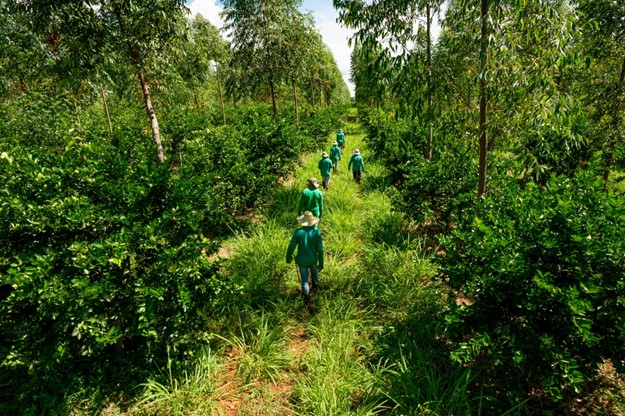In the face of escalating environmental crises, such as deforestation, biodiversity loss, and climate change, agroforestry emerges as a beacon of hope. This ancient yet innovative agricultural practice, which integrates trees and shrubbery into farmlands, is gaining recognition for its potential to offer sustainable solutions to some of the most pressing ecological challenges. Agroforestry not only enhances biodiversity and improves crop yieldvs, but also plays a crucial role in mitigating deforestation pressures, sequestering carbon, and providing economic stability to farming communities. This article by Stephen Wentzel delves into the multifaceted benefits of agroforestry, highlighting its significance as a sustainable agricultural model.
The Biodiversity Advantage
One of the most compelling benefits of agroforestry is its ability to boost biodiversity within agricultural ecosystems by a significant amount. Traditional farming practices often lead to a monoculture landscape, which can severely diminish the variety of species in an area. Agroforestry, by contrast, introduces a complex habitat where trees and shrubs provide food, shelter, and breeding grounds for a myriad of organisms. This habitat complexity encourages a resurgence of biodiversity, including beneficial insects, birds, mammals, and microorganisms. Such biodiversity is essential for pollination, pest control, and maintaining a balanced ecosystem, ultimately contributing to agricultural resilience and productivity.
Yield Improvements through Ecological Harmony
Agroforestry systems are designed to mimic natural ecosystems, creating a harmonious balance where crops can thrive. The strategic planting of trees and shrubs can lead to improved soil health through nitrogen fixation and organic matter addition, enhancing soil fertility and structure. These trees also play a critical role in regulating microclimates within the agricultural landscape by offering shade and wind protection, as well as helping to maintain a more consistent and favorable growing environment for crops. This results in not only higher yields, but also more stable agricultural output, which is particularly vital in regions facing erratic weather patterns caused by climate change.
A Bulwark against Deforestation
Deforestation remains one of the most significant environmental threats, driven largely by the expansion of agricultural land. However, agroforestry presents a sustainable alternative by maximizing the productivity of existing farmlands, thus reducing the need to clear additional forest areas. This approach is crucial for preserving forest ecosystems, which are vital for biodiversity, water regulation, and carbon storage. Moreover, agroforestry can rehabilitate degraded lands, offering a pathway to restore ecological functions and improve land use efficiency without resorting to further deforestation.
Carbon Sequestration: Fighting Climate Change
The capacity of agroforestry to sequester carbon serves as an especially critical asset in the global fight against climate change. Through photosynthesis, trees in agroforestry systems capture carbon dioxide from the atmosphere, storing carbon in their biomass and the soil. This not only helps mitigate the impacts of greenhouse gas emissions, but also enriches soil fertility, promoting healthier and more productive agricultural lands. The role of agroforestry in carbon sequestration illustrates the symbiotic relationship between sustainable agriculture and climate change mitigation efforts.
Economic Resilience and Diversification
Beyond its environmental benefits, agroforestry offers significant economic advantages for farmers. By diversifying farm outputs through the inclusion of trees and shrubs, farmers can tap into additional sources of income, such as the sale of timber, fruits, nuts, and medicinal plants. This diversification strategy not only enhances food security, but also buffers farmers against individual market fluctuations and crop failures. Additionally, many agroforestry practices require lower inputs of chemical fertilizers and pesticides, reducing production costs and minimizing the environmental footprint of farming activities.
Societal and Cultural Benefits
Agroforestry systems can also play a vital role in preserving indigenous knowledge and cultural heritage. Many indigenous and local communities have practiced agroforestry for centuries, developing sophisticated techniques that have been finely tuned for local ecosystems. By recognizing and integrating these traditional practices into contemporary agricultural strategies, agroforestry can be utilized for cultural preservation and the empowerment of local communities, fostering social cohesion and sustainable development.
Challenges and Future Directions
While the benefits of agroforestry are manifold, its adoption faces several challenges, including policy constraints, lack of awareness, and the need for technical knowledge. Mainstreaming agroforestry requires supportive policies, incentives, and research in order to tailor practices to local conditions and needs. There is also a critical need for education and capacity building among farmers, policymakers, and the general public to understand and implement agroforestry practices effectively.
Agroforestry represents a holistic approach to sustainable agriculture, harmonizing environmental conservation with agricultural productivity and socio-economic development. Its potential to enhance biodiversity, improve yields, combat deforestation, and mitigate climate change while providing economic benefits positions agroforestry as a key solution in the pursuit of a more sustainable and resilient agricultural future. As the world grapples with environmental degradation, agroforestry offers a promising path forward, demonstrating that it is possible to work with nature to achieve food security, environmental health, and economic prosperity.
